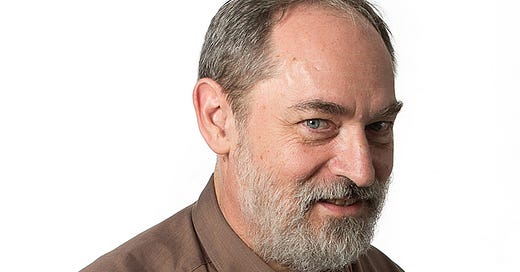The two physicists who had the greatest impact on my scientific carrier (if that’s what it can be called) are Berge Englert and David Mermin, about whom I shall write in another letter. Berthold-Georg (Berge) Englert is Provost’s Chair Professor at the National University of Singapore and Principal Investigator at the Centre for Quantum Technologies at NSU. Our paths crossed three times.
Encounter 1
Not long after I had published my first paper in American Journal of Physics, in 1996, I realized that I had made a mistake. I hadn’t heeded Nico van Kampen’s famous warning that “whoever endows the wave function with more meaning than is needed for computing observable phenomena is responsible for the consequences.” (The wave function is the quantum physicist’s principal calculational tool.) The first of these consequences (for me) was that the Editor of AJP send me a paper by B.G. Englert, M.O. Scully, and H. Walther for review. The authors of this paper pointed out my mistake and intended “to set the record straight.” Subsequently Berge (the corresponding author) and I were asked by AJP to each prepare a paper, and to submit them only after we had seen and approved each other’s final versions. Thence ensued a most amicable email correspondence between Berge and myself, which ended with Berge remarking that “I think we have more in common than we are willing to admit.” What was at issue was the interpretation of an experiment that had been proposed by Englert, Scully, and Walther. I’ll discuss it in another letter later.
Encounter 2
In 2008 I submitted a paper to the International Journal of Quantum Information. In this paper (published in 2009) I showed how the mathematical formalism of quantum mechanics is implied by the existence of “ordinary objects,” defined as objects that (i) neither collapse nor explode as soon as they are formed, that (ii) have magnitude or spatial extent, and that (iii) are composed of (large but) finite numbers of objects that lack magnitude or spatial extent. (The latter are usually referred to as “fundamental particles.” They include the electrons and the quarks. Quarks make up the protons and neutrons that make up the atomic nucleus.) I suspect it was mostly this paper, and the criticism it contained of the standard axiomatic approach to quantum mechanics, that led to my second encounter with Berge. (In physics, as distinct from pure mathematics, axioms are supposed to be clear and compelling. The standard axioms of quantum mechanics are anything but.) In the same year (2008) I received an email from a Senior Editor of World Scientific Publishing saying that they were looking for suitable authors to write books in the field of quantum mechanics. It continued:
We were very impressed with your extensive publication and your strong background in this field. Prof. Berthold-Georg Englert, National University of Singapore, Managing Editor of the International Journal of Quantum Information, also recommended to us that you might be the right person for this book project.
Okay, I know that such emails go out from many publishers to many physicists, but I was still tickled pink that Berge felt that way. It certainly wasn’t bad for a university dropout who has not seen the inside of a physics laboratory since his student days at the university of Göttingen in the mid-Seventies. This is how — after a phone conversation with Berge on the book proposal I had submitted — I came to write my textbook The World According to Quantum Mechanics: Why the Laws of Physics Make Perfect Sense After All. It appeared in 2011, which was followed by a significantly enlarged second edition in 2018. It may be the only book that has received an (unsolicited) five-star review on Amazon which says: “You will hate this book.” Here’s an excerpt from this review:
The way this book covers the two slit experiment everything falls into place and makes perfect sense. There is no wave particle dualism, just the naked necessity of a probabilistic regime. It is so simple. Painfully obvious. Easy to grasp with just a minimum of mathematical rigor. It boggles the mind that QM has not been understood this way from the get go. This feels like 20/20 hindsight writ large…. If you've been trying to make sense of QM you will hate this book. It'll make you feel stupid for not having been able to see this all along. Time to eat some humble pie.
Encounter 3
In May 2013 I received an email from Janos Bergou and Hans Briegel inviting my participation in a Workshop to honor Berge Englert on the occasion of his 60th birthday. Short of funds to travel to Singapore, I did not respond. But Fate does not relent. The next month, in June 2013, I participated in Quantum Physics Meets the Philosophy of Mind, a conference at the Catholic University of Milan, and who should turn up as a previously unannounced replacement for someone who had fallen ill? It was Hans Briegel, who gently reminded me of his invitation. Once it transpired that my shortness of funds was no matter, I enthusiastically accepted. This is how, in April 2014, I found myself in the company of some very well known physicists, including a couple of Nobel laureates. It turned out that I was the only participant whom Berge had never met in person. When I asked him to what I owed the honor of being invited, he simply replied that he liked my book.




